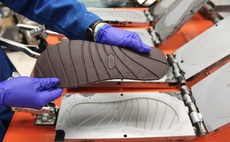
Industry Q&A: Keith Larson, Intel Capital
Keith Larson, VP and MD for the Manufacturing Sector at Intel Capital, talks about how truly world-class technology, electronics and gadget companies are making Asia – all of Asia – the place to look for the next, best thing.
Q: What is Intel Capital’s current perspective on investing in the region?
A: Our outlook for the greater pan-Asian region is very positive still. We see the demographics driving a lot of the economic development as the pan-Asian region matures further. Getting behind that is very strong. In Korea for example, the growth is really one of the strongest among all the OECD countries; we think that trend is going to continue.
For this year, one of the major trends we’re seeing is that it’s the year of the IPO for Asia. That’s really coming to front and center. This year so far to date we’re seeing it in our portfolio. We’ve had 10 IPOs in total so far for Intel Capital, and 6 of them are in Asia. We’ve had 2 in Korea so far this year. It just reinforces what’s happening so far in the overall economy.
[But] If I look at the challenges to balance everything out, there is the issue that people have to be conscious that they’re not overpaying for an investment. Our India team is also very conscious of that, and China too is very conscious of that. We still remain very bullish and continue to invest solidly in the pan-Asian region.
Q: Is this something that Intel’s investment style is appropriate for as a corporate VC?
A: We invest in things strategically that will help move Intel forward while being financially attractive. What we’re seeing overall in Intel’s business is that a lot of the growth is coming from countries outside of the US. What we’re doing in Intel Capital is, as part of the overall business development, capturing the overall trends. We are trying to continue to look for new and interesting ideas
Q: What do you see as the most interesting technologies and investment areas for Intel Capital to invest into?
A: In general, we’re still seeing the move to mobility as very active and promising, with all the new and interesting gadgets that people are developing, whether it’s new forms of computing pads, smartphones, new gadgets that are inside the home. We are seeing a whole lot of activity in the mobility and consumer electronics area.
Education is something that we’re seeing across the region as the economy tends to mature, education becomes important in driving that. We’re seeing things more like social network that are internet-related, like online gaming.
Q: How does the growth of China and India affect the other markets in the region?
A: There’s been a tremendous increase in the intellectual property in Korea and Taiwan lately. Those economies have been fueled a lot by the growth in China and India. Korea produces something like 40% of the flat panel displays in the world. A lot of that consumption is getting driven in India and China. We are seeing that as providing some interesting opportunities, even outside of Silicon Valley, which is a very interesting trend. I can see more and more companies wanting to expand their business outside their own countries, and we see cross-border deals expanding everywhere.
Q: Is Asia developing its own intellectual capital?
A: The population is growing, people want more devices, and there’s an opportunity to expand the business in the region. A newer trend is true world-class technology development. And we’re seeing deals of that type in the region now.
In Korea certainly, you’ve got a flat-panel display industry cluster. You’ve got the smartphone and wireless phone industry clusters. In Taiwan you’ve got D-RAM manufacturing and RAM manufacturing. One of the big clusters in Taiwan is really big expertise in simply manufacturing quickly, and getting time to market. And they’ve got a lot of experience in managing this at low cost.
Q: How favorable is Asia right now to the VC business approach?
A: There is a stronger wind behind it in the Asia Pacific region. We’ve had a really good economic recovery here. The drivers of that are going to be the fact that in these really local exchanges, people in Asia are trying to understand what they’re going to do with their money and how to invest it. There’s a demand for investment vehicles in general, and that’s helping to drive the IPOs. In some regions, IPOs are virtually the only exit vehicles. In Korea for examples, over 80% of the exits are by IPOs instead of by M&A, and in Taiwan it’s [about the same]. In Korea there tend to be fewer mid-market private companies. It seems when they get to a certain size, they go public.
Intel Capital is always trying to look for that next new thing. Right now, we think there have been a number of successes in the pan-Asian region, and we see that continuing, going forward.
Further reading
Latest News
Asian GPs slow implementation of ESG policies - survey
Asia-based private equity firms are assigning more dedicated resources to environment, social, and governance (ESG) programmes, but policy changes have slowed in the past 12 months, in part due to concerns raised internally and by LPs, according to a...
Singapore fintech start-up LXA gets $10m seed round
New Enterprise Associates (NEA) has led a USD 10m seed round for Singapore’s LXA, a financial technology start-up launched by a former Asia senior executive at The Blackstone Group.
India's InCred announces $60m round, claims unicorn status
Indian non-bank lender InCred Financial Services said it has received INR 5bn (USD 60m) at a valuation of at least USD 1bn from unnamed investors including “a global private equity fund.”
Insight leads $50m round for Australia's Roller
Insight Partners has led a USD 50m round for Australia’s Roller, a venue management software provider specializing in family fun parks.








